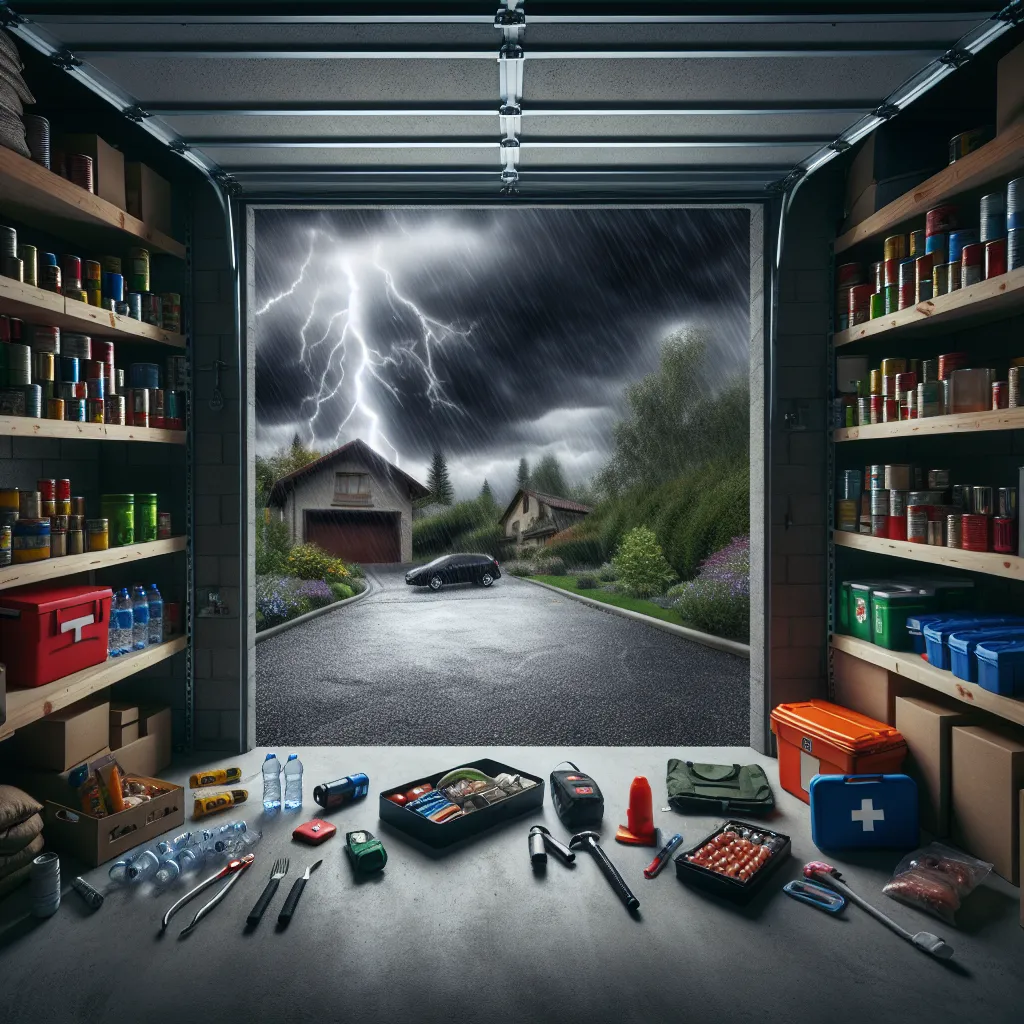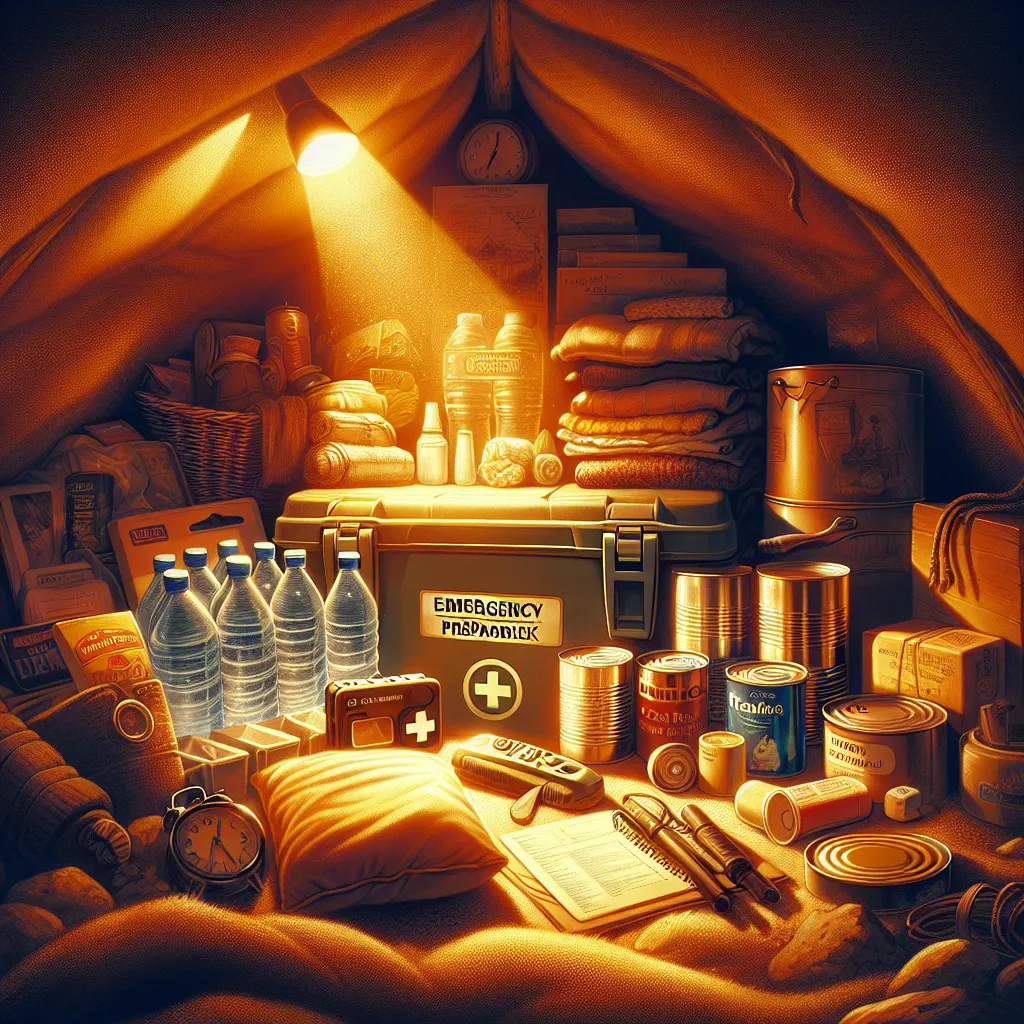How to prepare your shelter for unexpected natural disasters?

- How do you prepare for natural disasters and create a safe shelter?
- How to properly prepare for emergencies and stay healthy?
Preparing for natural disasters
In natural disasters, such as hurricanes or tornadoes, moving people quickly from dangerous areas becomes a real challenge. Although meteorologists can predict the approach of a hurricane, other hazardous weather events often occur quite unexpectedly. At such critical times, the safest place to take shelter is your own home.
To be prepared for various unpleasant surprises of nature, it is worth thinking about organizing a protected area, or, as it is also called, a safe room.
Building a safe room
It is not necessary to create complex underground structures with high technology, as it is often shown in movies. In practice, a standard room with reinforced walls and the necessary equipment can be enough to create a safe space. This safe room will provide protection not only from natural disasters, but also from possible burglars.
Selecting a shelter site
One of the main issues becomes the choice of location for the security device.
- A garage can be a good option, as its design in most cases proves to be more resistant to damage compared to other parts of the home, reducing the risk of debris backfill.
- If it is not possible to create a shelter in the garage, it is recommended to consider the first floor or basement. The latter option is especially appropriate in hurricanes, as it is less exposed to strong winds.
- However, if you live in a possible flood zone, you should refrain from the idea of an underground shelter.
Wall reinforcement
After selecting the appropriate room, you should not forget to reinforce the walls, which should be able to withstand strong impacts caused by hurricanes or tornadoes. Reinforced concrete walls that are securely connected to the floor are ideal.
To minimize the risk of damage to the windows, it is better to rebuild them using bricks for this purpose. If this is not possible, it makes sense to install impact-resistant glass. As for doors, both metal and sturdy wooden structures are suitable for a safe room. It would also be wise to equip the doors withcombination locksso you can quickly close in for cover.
Video surveillance and communication
It is important to consider installing video cameras that will allow you to monitor what is happening in your home while you are in a safe room. If unwanted situations arise, you will always be able to quickly contact law enforcement.
Another important aspect is the ability to keep in touch. It is therefore worth taking care to have both a cell phone and a landline.
Ventilation systems
Ventilation should not be overlooked in a natural disaster. During hurricanes and tornadoes, air quality can deteriorate significantly and you will need an air filtration system that requires a generator set to operate.
Stock preparation
No one can predict how long you'll be in shelter, so it's wise to prepare ahead of time and stock up on food and water for at least athree days.
Calculate that each family member should have at least a3-4 liters of drinking waterper day.
9 October 2024
29 September
29 January
9 October 2024
- canned food
- dry cookies
- ready-made breakfasts
- porridge
- powdered milk
Preparing such supplies will ensure you have the necessary safety and comfort in unforeseen situations.
If you are planning to create your food supply, it is extremely important to periodically assess its condition. You should conduct a check at least once every three to six months to avoid using spoiled products.
First aid kit and important documents
It is also important to remember to have a first aid kit that should contain all the necessary medications for providing first aid. In addition to this, it is advisable to prepare copies of all important documents that may be needed in a critical situation.
Personal belongings and hygiene
Don't forget the need to stock up on personal hygiene items, such as:
- soap;
- toothpaste;
- toilet paper;
- other accessories.
Emergency tools
A flashlight, spare batteries, and a radio receiver should be in your supplies to ensure communication with the outside world in emergency situations. Tools like a shovel, saw, and knife can be extremely useful for carrying out various practical tasks and ensuring your safety.
Readiness for emergencies
Creating such a set of items significantly increases your readiness for various natural disasters and life situations. It's important to realize that proper preparation can greatly affect your level of comfort during a crisis.
Conclusions
Maxim Lyubimov emphasizes that a well-established reliable reserve will not only ensure survival but also maintain health in the face of unforeseen events. By regularly updating your supplies and keeping them in good condition, you can avoid the stress associated with a lack of necessary items. Each of the aforementioned suggestions plays a significant role in ensuring your safety and comfort during difficult times in life.

Introduction
I hope this article has helped you understand the importance of setting up a safe room in your home. Natural disasters, such as hurricanes and tornadoes, can strike at any moment, and it is crucial to be prepared for unforeseen situations.
Creating a safe haven
Creating a safe haven doesn't require huge financial investments or complex architecture; the main focus should be on its reliability and functionality.
The main steps for setting up a safe room:
- Choice of location:Choose a convenient and safe location for your safe room.
- Reinforcement of walls:The walls should be strong enough to withstand strong winds and impact loads.
- Equipment:Install the necessary devices for communication, ventilation, and air filtration.
- Food supply:Make sure you have enough supplies and water.
Emergency supplies for a crisis
It's important to have supplies for at least three days. The recommended amount of water is 3-4 liters per person per day. Dry foods and canned goods are suitable for long-term storage.
Products worth storing:
- Dry cookies
- Canned products
- Quick breakfasts
- Cereals and powdered milk
Medical kit and safety
All products in storage need to be checked every 3–6 months and expired items should be removed. The shelter should also have:
- Medical kit
- Copies of important documents
- Personal hygiene items
- Flashlight and batteries
- Radio for obtaining information
- Tools such as a shovel and a knife
Conclusion
By creating a safe space in your home, you not only enhance your security but also improve your overall sense of confidence and calm in a challenging world. Finally, remember that prevention and preparedness are key to survival. May your efforts make your home not only cozy but also a reliable shelter where you can feel safe in any situation.
Comment
Popular Posts
9 October 2024
9940
29 September
386
9 October 2024
1485
Popular Offers

Subscribe to the newsletter from Hatamatata.com!
Subscribe to the newsletter from Hatamatata.com!
I agree to the processing of personal data and confidentiality rules of Hatamatata





